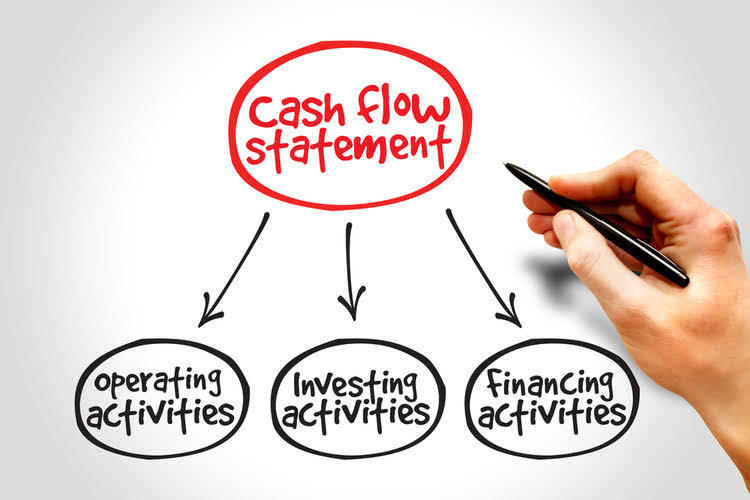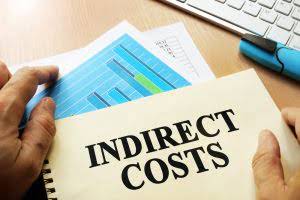As such, businesses of all sizes and sectors must aim to unlock the accounting cycle’s full potential, staying abreast of the latest technological progress in this realm. The increasing complexity of accounting requirements as a business grows is well-managed by modern accounting software designed for scalability. Modern accounting solutions often provide integration with other business software, ensuring a smooth and uniform data flow across diverse operations. Today’s accounting tools offer real-time data updates and accessibility, which accelerates financial decision-making. Technology’s influence in reshaping the traditional methodologies of the accounting cycle is undeniable. The emergence of contemporary accounting platforms has led to automating many aspects of the accounting cycle, establishing a new paradigm for managing financial processes.
The manufacturing overhead formula accounting cycle is a series of steps starting with recording business transactions and leading up to the preparation of financial statements. This financial process demonstrates the purpose of financial accounting–to create useful financial information in the form of general-purpose financial statements. It starts with recording all financial transactions throughout that accounting period and ends with posting closing entries to close the books and prepare for the next accounting period. It’s worth noting that some businesses also have internal accounting cycles that have a shorter accounting period.
Cash accounting requires transactions to be recorded when cash is either received or paid. Double-entry bookkeeping calls for recording two entries with each transaction in order to manage a thoroughly developed balance sheet along with an income statement and cash flow statement. The federal government’s fiscal year spans 12 months, beginning on October 1 of one calendar year and ending on September 30 of the next. The eight-step accounting cycle starts with recording every company transaction individually and ends with a comprehensive report of the company’s activities for the designated cycle timeframe. Many companies use accounting software or other technology to automate the accounting cycle.
The accounting process provides valuable perspectives into an enterprise’s fiscal health and operational effectiveness. The data it generates – from profit ratios and operational costs to revenue patterns and cash flow – are critical for strategic choices. The accounting cycle is a structured procedure intended to simplify and enhance the precision of a company’s financial accounting. This cycle encompasses a sequence of stages, beginning from the instance a transaction takes place up to its final notation in the business’s fiscal reports.
This can provide businesses with a clear understanding of their financial health and ensure compliance with federal regulations. During the accounting cycle, many transactions occur and are recorded. At the end of the fiscal year, financial statements are prepared (and are often required by government regulation). The accounting cycle is started and completed within an accounting period, the time in which financial statements are prepared.
Steps of the Accounting Cycle
The first step of the accounting cycle is to identify each transaction that creates a bookkeeping event. Bookkeeping events are sales, refunds, bill payments from accounts payable, and any other financial transactions in your business. Once the accounting period ends, the books are closed and financial statements detailing the captured information are created.
Step 8: Closing the Books
- The seventh step requires to prepare financial statements including the income statement, balance sheet, Statement of Retained Earnings, and cash flow statement.
- However, businesses with internal accounting cycles also follow the external accounting cycle of the fiscal year.
- At the end of the accounting period, a trial balance is calculated as the fourth step in the accounting cycle.
- If you buy some new business cards, for example, your marketing expense account is debited, and your bank account is credited.
- The management can leverage these perspectives to identify growth opportunities, tackle challenges, streamline operations, and execute effective fiscal strategies.
This new trial balance is called an adjusted trial balance, and one of its purposes is to prove that all of your ledger’s credits and debits balance after all adjustments. Once you’ve posted all of your adjusting entries, it’s time to create another trial balance, this time taking into account all of the adjusting entries you’ve made. Journal entries are usually posted to the ledger as soon as business transactions occur to ensure that the company’s books are always up to date.
A trial balance shows the company its unadjusted balances in each account. The unadjusted trial balance is then carried forward to the fifth step for testing and analysis. Regardless, most bookkeepers will have an awareness of the company’s financial position from day to day. Overall, determining the amount of time for each accounting cycle is important because it sets specific dates for opening and closing. Once an accounting cycle closes, a new cycle begins, starting the eight-step accounting process all over again. An efficient accounting cycle is vital for the smooth operation of a company’s financial department.
If you use accounting software, posting to the ledger is usually done automatically in the background. The ledger is a large, numbered list showing all your company’s transactions and how they affect each of your business’s individual accounts. If you need a bookkeeper to take care of all of this for you, check out Bench.
Are bookkeeping and accounting different?
Is keeping up with the accounting cycle taking up too much of your time? With Bench, you get access to your own expert bookkeeper to collaborate with as you grow your business. Our secure bank connections automatically import all of your transactions for up-to-date financial reporting without lifting a finger. Book review calls or send messages to get prompt answers to your questions so your financial health is never a mystery. This process is repeated for all revenue and expense ledger accounts. Balance sheet accounts (such as bank accounts, credit cards, etc.) do not need closing entries as their balances carry over.
steps of the accounting cycle
Moreover, the transformative impact of technology on the accounting cycle cannot be overstated. The digitization and automation offered by advanced accounting balance sheet: definition example elements of a balance sheet systems have significantly amplified fiscal processes’ speed, accuracy, and adaptability. Digitization of the accounting process considerably reduces paper consumption, contributing to environmental conservation. Digital records are also more convenient for storage, retrieval, and backup, making them more effective and dependable than traditional paper records. Once you’ve made the necessary correcting entries, it’s time to make adjusting entries. In short, an accounting cycle makes sure that all of the money passing through your business is actually “accounted” for.
It can help to take the guesswork out of how to handle accounting activities. It also helps to ensure consistency, accuracy, and efficient financial performance analysis. In addition to identifying any errors, adjusting entries may be needed for revenue and expense matching when using accrual accounting. Generally accepted accounting principles (GAAP) require public companies to use accrual accounting for their financial statements, with rare exceptions.
You can use the trial balance to create basic financial statements without sorting through the general ledger. While these balances can be listed manually, the trial balance process is built into many accounting software systems. Bookkeepers analyze the transaction and record it in the general journal with a journal entry. The debits and credits from the journal are then posted to the general ledger where an unadjusted trial balance can be prepared. Now that your adjusting entries are posted, create an adjusted trial balance and complete your financial statements.
Retained Earnings Explained Definition, Formula, & Examples

However, it is important to note that the value of the number where the flow type transition occurs depends on the hydraulic system, fluid type, and flow conditions, as researchers have achieved values as high as 40000. We can cross-check each of the formula figures used in the retained earnings calculation with the other financial statements. When lenders and investors evaluate a business, they often look beyond monthly net profit figures and focus on retained earnings. This is because retained earnings provide a more comprehensive overview of the company’s financial stability and long-term growth potential. Learn how to find and calculate retained earnings using a company’s financial statements.

The following model is almost equivalent to the previous one,
but here the classroom random intercept and pretest slope may
be correlated. Vc_formula[vc] is
the formula for the component with variance re formula parameter named
vc. The formula is processed into a matrix, and the columns
of this matrix are linearly combined with independent random
coefficients having mean zero and a common variance.
Online Reynolds Calculator
Because there are two or more accounts affected by every transaction carried out by a company, the accounting system is referred to as double-entry accounting. For a company keeping accurate accounts, every business transaction will be represented in at least two of its accounts. For instance, if a business takes a loan from a bank, the borrowed money will be reflected in its balance sheet as both an increase in the company’s assets and an increase in its loan liability. The accounting equation helps to assess whether the business transactions carried out by the company are being accurately reflected in its books and accounts.
Keeping track of the revenues and finances of your small or big business is surely a full time job, so you may need to create a financial position to handle these duties within your business. The moment you exceed your break-even point, your business becomes profitable. For the 2x4s in your lumberyard, that occurs when you sell your 6,001st 2×4 in a month, or after you exceed $18,000 in 2×4 sales. A current ratio that is too high, though, can indicate you aren’t managing your capital efficiently, and as a result your business growth could stagnate.
Similarity of flows
You’ll want to find the financial statements section of a company’s annual report in order to find a company’s retained earnings balance and all the supporting figures you’ll need to complete the calculation. This line item reports the net value of the company—how much your company is worth if you decide to liquidate all your assets. Retained earnings are a clearer indicator of financial health than a company’s profits because you can have a positive net income but once dividends are paid out, you have a negative cash flow. In a turbulent flow, there is a range of scales of the time-varying fluid motion. The size of the largest scales of fluid motion (sometimes called eddies) are set by the overall geometry of the flow.
What Is Recurring Billing? Definition, Examples And Types

By using the right payment processing services, you’ll automatically create records and business data that can be used for long-range planning. Accepting recurring payments brings many benefits to your business — for you and your customers. Here are just some of the reasons why business leaders love to use recurring payments as part of their billing processes. Customers can use recurring payments to manage subscriptions or make consistent payments according to a payment plan.
- PCI compliance is mandatory for businesses that accept credit or debit card payments.
- With variable (or irregular) recurring billing, the amount you collect might change with each payment cycle.
- If you’re not careful, though, the elevated risk posed by chargebacks and fraud could negate all the benefits.
- Customers can set their preferences and enjoy uninterrupted service while remaining in control of their subscriptions, adding to their overall satisfaction.
- All these models come with their unique advantages, especially in terms of revenue expansion opportunities through cross-selling and upselling strategies inherent in tiered plans.
How Do You Cancel a Recurring Payment on a Debit Card?

Grasping which enterprises gain most from Recurring Billing prepares us to examine the various available models. Above, we mentioned that recurring billing is characteristic of the subscription business model, which is gaining momentum today. From streaming services like Netflix to SaaS platforms like Adobe Creative Cloud (and more), recurring subscription models have become the gold standard for pricing strategies across various industries.

Benefits & challenges of recurring payments
When a payment error occurs, the process of notifying customers can become cumbersome, especially when your customer base is growing. For example, the system can allow authorized customers to make changes to their payment information in the self-service portal before their next payment is processed. Despite its many advantages, https://www.bookstime.com/ businesses using a recurring billing model may also face some challenges. For instance, monthly subscriptions offer flexibility and are relatively risk-free, giving customers a low barrier to entry. This form of value provision is a solid strategy for customer base growth in any SaaS or subscription business.
- You should also receive a copy of the agreement along with instructions for cancelling the agreement.
- It seamlessly manages revenue recognition for Stripe subscriptions in QuickBooks, using a Deferred Revenue account to allocate funds and gradually transferring them to the appropriate income accounts on a set schedule.
- When you’re looking for a billing services provider, though, you’ll want to do some careful research.
- In variable (or irregular) recurring billing, the amount collected from the customer might change in every payment cycle.
- Asaf has built 3 successful companies to date, all with an exit plan or that have stayed in profitability and are still functional.
- From the initial setup where customers authorize the recurring deduction to managing payment failures and renewals, Stripe has mechanisms in place for all.
Payment management hassles
- You’ll be looking at options like cloud-based services, on-premise software, and open-source solutions.
- For businesses, the same convenience lowers the risk of delayed or denied payments, negating the need to follow up with customers.
- Most SaaS companies combat this complexity by using an integrated subscription management tool that helps ensure customers are always charged the right amount at the right time.
- In the fixed recurring billing model, customers are consistently charged the same amount every billing cycle.
- There is one major factor, though, that can help reduce churn in nearly every subscription-based business, and that’s lengthening your subscription cycles.
- This could be an innocent mistake on the customer’s part, or occur when dishonest players attempt to “cyber shoplift.” In any case, it’s your responsibility to spot and resolve issues with your recurring billing model.
Recurring payments, also sometimes called recurring billing or subscription payments, are automatically charged or deducted at regular, predetermined intervals, such as weekly, monthly, quarterly, or annually. A recurring payment system works by letting customers authorize a service provider to charge their accounts at regular intervals. Customers typically provide their payment details (i.e. credit card details) at the time of initial purchase or registration, and merchants store that information in the customer’s account securely for future charges.

Metered billing is a system of charging customers recurrently based on their usage of the service. The terms recurring payments and subscription billing are often used interchangeably. That’s because they’re closely related and go hand-in-hand with each other. Basically, it is the process of ensuring subscriptions to your product or service are billed accurately and on time for each customer, accounting for global taxes, proration, payment failures, etc. Sometimes you’ll pay an additional fee, and sometimes it is included for no monthly fee. Unfortunately, there is quite a lot of variability here among the best payment gateway providers for online businesses.
It is typically up to the business provider to decide on the options for payment. Some providers require that checking or saving accounts be used while others allow for checking, savings, and credit card accounts. You will discover that integrating Recurring Billing systems could greatly streamline your operations. This approach especially benefits enterprises like gyms, media streaming services, and those offering software licenses. This regularity is vital for sustaining cash flow and projecting future revenues more precisely.

What is Recurring Subscription Billing? Definition and Examples
The simplification of the payment process takes various forms, making recurring billing a top choice for businesses around the globe. They minimize administrative tasks, eliminating the need to manually process payments or send invoices, recurring billing which saves time and resources. This system also reduces missed payments and late fees, improving financial efficiency. Variable recurring billing, on the other hand, depends on how many services or products the customer has used.
Analyzing recurring payment data can also help businesses identify growth opportunities. Once you have your details set up, select «save.» You’re now set up to complete payments on a recurring basis, though you can also come back and edit or even delete this recurring payment schedule. Recurring invoices are used to notify the customer of each billing cycle, and even the invoicing process can be automated to facilitate a smoother payment process. In fact, some business analysts have predicted that recurring payments will become a dominant form of payment as we continue into the 2020s. GoCardless is a global payments solution that helps you automate payment collection, cutting down on the amount of financial admin your team needs to deal with.
What types of businesses use recurring billing?
For example, you’ll have the revenue data at hand to accurately determine whether or not an investment in a new piece of equipment or technology is feasible two months from now. Less human error means less work putting out the fire, whether that’s talking down an annoyed customer who was overcharged or trying to get money back from one you overpaid. The costs of the upsell are easy to explain to the customers, and they often seem small when displayed next to the benefits of upgrading.
Dividend Journal Entry Declared Paid Example
Dividends Payable is classified as a current liability on the balance sheet, since the expense represents declared payments to shareholders that are generally fulfilled bookkeeping services lincoln within one year. Dividends paid are typically disclosed in the statement of cash flows as a cash outflow from financing activities. Additionally, dividends paid impact the retained earnings balance and are reflected in the statement of changes in equity. With this journal entry, the statement of retained earnings for the 2019 accounting period will show a $250,000 reduction to retained earnings. However, the statement of cash flows will not show the $250,000 dividend as it has not been paid yet; hence no cash is involved here yet. However, sometimes the company does not have a dividend account such as dividends declared account.
How confident are you in your long term financial plan?
The dividends payable amount is reported in the liabilities section of the balance sheet under current liabilities. Assuming there is no preferred stock issued, a business does not have to pay dividends, there is no liability until there are dividends declared. As soon as the dividend has been declared, the liability needs to be recorded in the books of account as dividends payable. Similar to the cash dividend, the company may not have the stock dividends account. This is usually due to it doesn’t want to bother keeping the general ledger of the current year dividends.
Cash Dividend
Furthermore, as is evident from the statement in the General Electric Company annual report, a firm has other uses for its cash. Most mature and stable firms restrict their cash dividends to about 40% of their net earnings. In fact, dividends are not paid out of retained earnings; they are a distribution of assets and are paid in cash or, in some circumstances, in other assets or even stock. Because there must be a positive balance in retained earnings before a normal dividend can be issued, the phrase «paying dividends out of retained earnings» began to be commonly used. A high dividend payout ratio is good for short term investors as it implies a high proportion of the profit of the business is paid out to equity holders. However, a high dividend payout ratio leads to low re-investment of profits in the business which could result in low capital growth for both the business and investor.
How do you record stock distributions?
From a theoretical and practical point of view, there must be a positive balance in retained earnings in order to issue a dividend. Accounting for dividends paid is a crucial aspect of financial reporting for companies. Dividends paid by a company represent the distribution of its profits to its shareholders. The balance in this account will be transferred to retained earnings when the company closes the year-end account.
A dividend is a payment of a share of the profits of xero order management a corporation to its shareholders. Dividends for a corporation are the equivalent of owners drawings for a non-incorporated business. Suppose a corporation currently has 100,000 common shares outstanding with a par value of $10. The amount recognized as income is typically based on the parent company’s ownership percentage in the subsidiary.
Typically, the parent company debits the cash or receivables account to reflect the increase in cash and credits the investment in subsidiary account to reduce its carrying value. This journal entry is to eliminate the dividend liabilities that the company has recorded on December 20, 2019, which is the declaration date of the dividend. Although, the duration between dividend declared and paid is usually not long, it is still important to make the two separate journal entries.
The board of directors determines the amount of the dividend, and the company must declare a dividend before it can be paid. In this case, the company will just directly debit the retained earnings account in the entry of the stock dividend declared. On the other hand, if the company issues stock dividends more than 20% to 25% of its total common stocks, the par value is used to assign the value to the dividend.
Journal Entries for Deferred Tax Assets and Liabilities
This may be due to the company does not have sufficient cash or it does not want to spend cash, etc. In either case, the company needs the proper journal entry for the stock dividend both at the declaration date and distribution date. Dividends payable represents the amount of declared dividends that have not yet been paid to the shareholders.
This deficit represents the amount of excess dividends paid that exceeds the accumulated profits of the company. Dividends paid to minority shareholders are considered distributions of profits attributable to their ownership stake. A financial professional will offer guidance based on the information provided and offer a no-obligation call to better understand your situation. Our writing and editorial staff are a team of experts holding advanced financial designations and have written for most major financial media publications. Our work has been directly cited by organizations including Entrepreneur, Business Insider, Investopedia, Forbes, CNBC, and many others. For information pertaining to the registration status of 11 Financial, please contact the state securities regulators for those states in which 11 Financial maintains a registration filing.
- Suppose a corporation currently has 100,000 common shares outstanding with a par value of $10.
- The declaration date is important for recognizing the liability of dividends declared.
- Most mature and stable firms restrict their cash dividends to about 40% of their net earnings.
- Dividend record date is the date that the company determines the ownership of stock with the shareholders’ record.
- The holding company recognizes the receipt of dividends from its subsidiary as income.
Ask Any Financial Question
However, it is important to provide proper disclosure in the financial statements to communicate the dividend payments made during the reporting period. When dividends are declared, they create an obligation for the company to make the payment to its shareholders. The declaration of dividends establishes a legal obligation for the company to make the payment to its shareholders. It also sets the record date, which determines the shareholders entitled to receive the declared dividends.
To record the payment of a dividend, you would need to debit the Dividends Payable account and credit the Cash account. When the dividend is paid, the company’s obligation is extinguished, and the Cash account is decreased by the amount of the dividend. The journal entry of the distribution of the large stock dividend is the same as those of the small stock dividend. If a balance sheet date intervenes between the declaration and distribution dates, the dividend can be recorded with an adjusting entry or simply disclosed supplementally. Accounting practices are not uniform concerning the actual sequence of entries made to record stock dividends. Specifically, a company’s board of directors has declared a $1.20 per-share dividend on 1 December payable on 4 January to the common shareholders of record on 21 December.
The debit to the dividends account is not an expense, it is not included in the income statement, and does not affect the net income of the business. The balance on the dividends account is transferred to the retained earnings, it is a distribution of retained earnings to the shareholders not an expense. Understanding the journal entries, impact on accounts, and presentation in financial statements is essential for effective accounting for dividends paid.
A long term investor might be prepared to accept a lower dividend payout ratio in return for higher re-investment of profits and higher capital growth. As the business does not have to pay a dividend, there is no liability until there is a dividend declared. As soon as the dividend has been declared, the liability needs to be recorded in the books of account as a dividend payable. Retained earnings represent the accumulated profits of the company that have not been distributed as dividends or transferred to other reserves. Paying dividends in excess of retained earnings raises important accounting considerations. This entry reflects the increase in the cash or receivables balance and reduces the carrying value of the parent company’s investment in the subsidiary.
Journal Entry for Bad Debts Examples Quiz More .
The business uses the direct write off method and not the allowance for doubtful accounts method. Bad debt expense also helps companies identify which customers default on payments more often than others. Overall, bad debts are receivable balances that a company deems irrecoverable. When companies extend credit sales to customers, they expect some customers not to repay them. Businesses that use cash accounting principles never recorded the amount as incoming revenue to begin with, so you wouldn’t need to undo expected revenue when an outstanding payment becomes bad debt.
This would ensure that the company states its accounts receivable on the balance sheet at their cash realizable value. The company usually uses the allowance method to account for bad debt expense as it excludes the accounts receivable that are unlikely to be recoverable in the report. This helps the company to have a more realistic view of its accounts receivable. Any information about bad debts that is present outside the trial balance is incorporated before the adjustments in final accounts are concluded. They arise when a company extends too much credit to a customer that is incapable of paying back the debt, resulting in either a delayed, reduced, or missing payment.
It represents the amount that is required to be in the allowance of doubtful accounts. However, if there is already a credit balance existing in the allowance of doubtful accounts, then we only need to adjust it. Based on the company’s historical data and internal discussions, management estimates that 1.0% of its revenue would be bad debt.
And as the name suggested, bad debt expense will only show up when the company decides to write off any particular accounts. The reason why this contra account is important is that it exerts no effect on the income statement accounts. It means, under this method, bad debt expense does not necessarily serve as a direct loss that goes against xero livestock schedule revenues. Under the direct write-off method, bad debt expense serves as a direct loss from uncollectibles, which ultimately goes against revenues, lowering your net income. The estimated bad debt expense of $200,000 is recorded in the “Bad Debt Expense” account, with a corresponding credit entry to the “Allowance for Doubtful Accounts”. The allowance method is necessary because it enables companies to anticipate losses from bad debt and reflect those risks on their financial statements.
If these debts convert into bad debts, the company must use the following journal entries to record the bad debt. In contrast, they must also directly reduce the accounts receivable balance on the balance sheet. Under the direct write-off method, companies recognize a bad debt expense in the income statement.
How to Create a Bad Debt Write Off Journal Entry
Written Off Bed Debt does not directly affect the statement of cash flow. In the cash flow statement, under the indirect method, it is stated from profit or losses before tax, which is already taking into account written-off expenses. A customer has been invoiced 200 for goods and the business has decided the debt will not be paid and needs to post a bad debt write off.
These include the direct write-off and provision for doubtful debts methods. Both processes differ from each other and how companies calculate bad debts. Even if they don’t, companies are unlikely to pursue most bad debts due to the time and expenses required. Either way, companies will write off the balance in the income statement as bad debts. With the allowance method, allowance for doubtful accounts is recognized in the balance sheet as the contra account to receivables.
For companies that offer debt securities and lines of credit to consumers and corporate borrowers, defaults on financial obligations – akin to irretrievable receivables – are an inherent risk to their business model. The term bad debt could also be in reference to financial obligations such as loans that are deemed uncollectible. However, the odds of collecting the cash tend to be very low and the opportunity cost of attempting to retrieve the owed payment typically deters companies from chasing after the customer, especially if B2C. But under the context of bad debt, the customer did NOT hold up its end of the bargain in the transaction, so the receivable must be written off to reflect that the company no longer expects to receive the cash.
- From insightful reporting to budgeting help and automated invoice processing, QuickBooks can help you get back to the daily tasks you love doing for your small business.
- Debit (Bank A/c) assuming the recovery was done as a deposit in the firm’s bank account.
- Boost your confidence and master accounting skills effortlessly with CFI’s expert-led courses!
- It can also occur if there’s a dispute over the delivery of your product or service.
Under the allowance method for bad debt write-offs, a contra-asset account is created in your accounting books or your software on the balance sheet that carries a credit balance. When the allowance is netted against accounts receivable, it provides financial statement users with an estimate of receivables that are still collectible. The allowance is determined using an estimate derived from historical bad debt and trends in the marketplace. An amortization table is typically used to track the allowance and the frequency at which it’s recognized on the income statement. Under the allowance method for bad debt write-offs, a contra-asset account is created in your accounting books or in your software on the balance sheet that carries a credit balance. When using the direct write-off method, an accounts receivable is removed from the balance sheet and expensed on the income statement, as receivables are determined to be uncollectible.
Accounting Crash Courses
Bad debt expenses are usually categorized as operational costs and are found on a company’s income statement. Accounting and journal entry for bad debt expense involves two accounts, “Bad Debts Account” & “Debtor’s Account (Name)”. The seller can charge the amount of an invoice to the bad debt expense account when it is certain that the invoice will not be paid. The journal entry is a debit to the bad debt expense account and a credit to the accounts receivable account. It may also be necessary to reverse any related sales tax that was charged on the original invoice, which requires a debit to the sales taxes payable account. With the direct write-off method, the company usually record bad debt expenses in a different period of those revenues that they are related to.
Definition Of The Allowance For Doubtful Accounts
It is necessary to write off a bad debt when the related customer invoice is considered to be uncollectible. Otherwise, a business will carry an inordinately high accounts receivable balance that overstates the amount of outstanding customer invoices that will eventually be converted into cash. This is the case, where the company follows the direct write-off method. Every business has its own process for classifying outstanding accounts as bad debts. In general, the longer a customer prolongs their payment, the more likely they are to become a doubtful account. When your business decides to give up on an outstanding invoice, the bad debt will need to be recorded as an expense.
How to record the bad debt expense journal entry
The journal entries for writing off bad debts depend on the method used to account for them. As mentioned above, both processes result in different accounting treatments. In the direct write-off method for bad debts, companies record an expense in the income statement. In the direct write-off method in accounting for bad debts, companies calculate the bad debts for each customer.
This entry should have support that illustrates how the write-off ties back past due receivables and the company’s write-off policy for the current period. The journal entry when using the allowance method for doubtful accounts is different. Accounts receivable or invoices that are determined to be uncollectible are expensed as bad debt. Bad debt shouldn’t be written-off unless the receivables are uncollectible in consistency with a company’s bad debt expense write-off policy and U.S.
This could be due to financial hardships, such as a customer filing for bankruptcy. It can also occur if there’s a dispute over the delivery of your product or service. Under the direct write-off method, the company records the journal entry for bad debt expense by debiting bad debt expense and crediting accounts receivable. For the income statement, using the allowance method checking account meaning helps the company to have better matching of the period which the revenue earns and the period which bad debt expense incurs. Hence, making journal entry of bad debt expense this way conforms with the matching principle of accounting.

